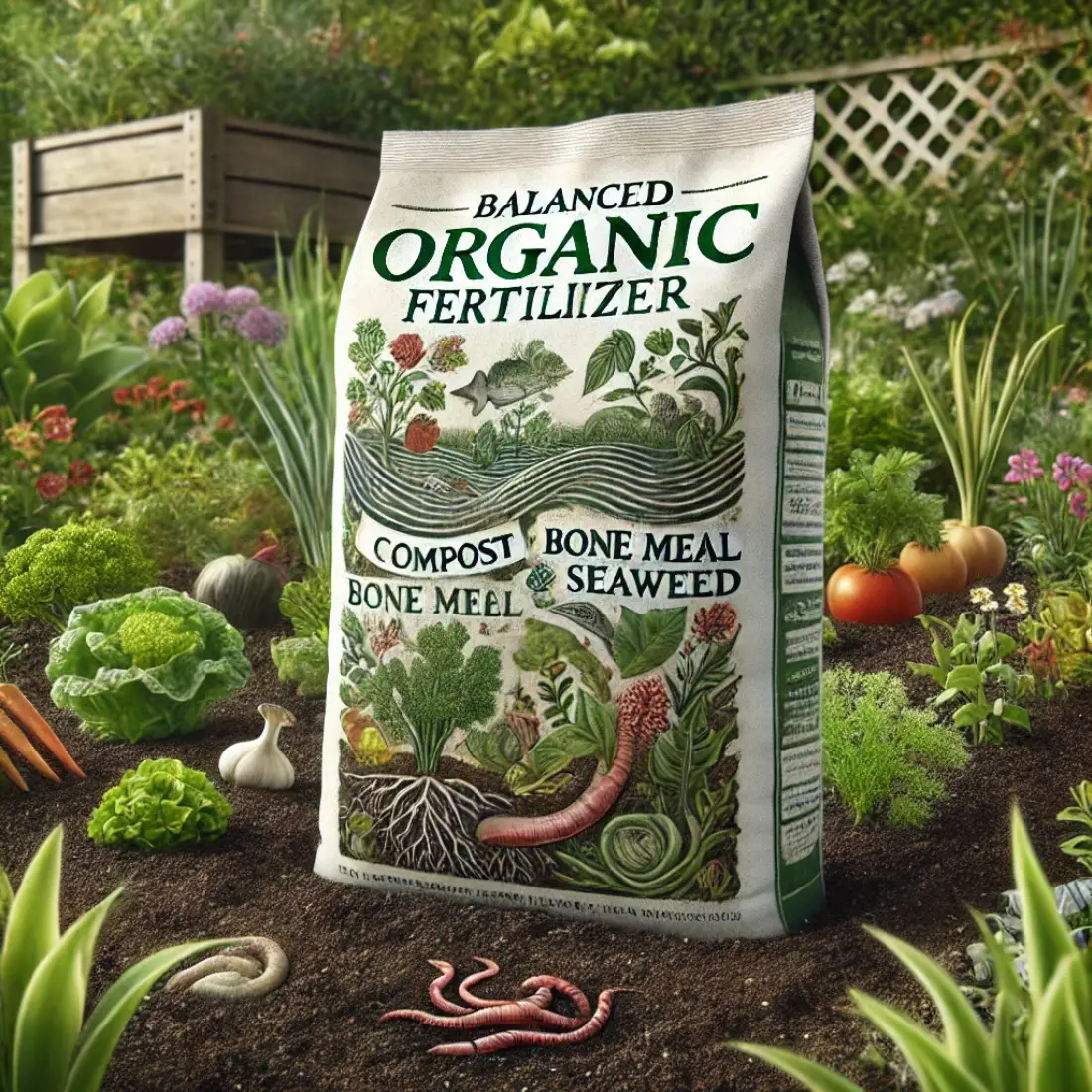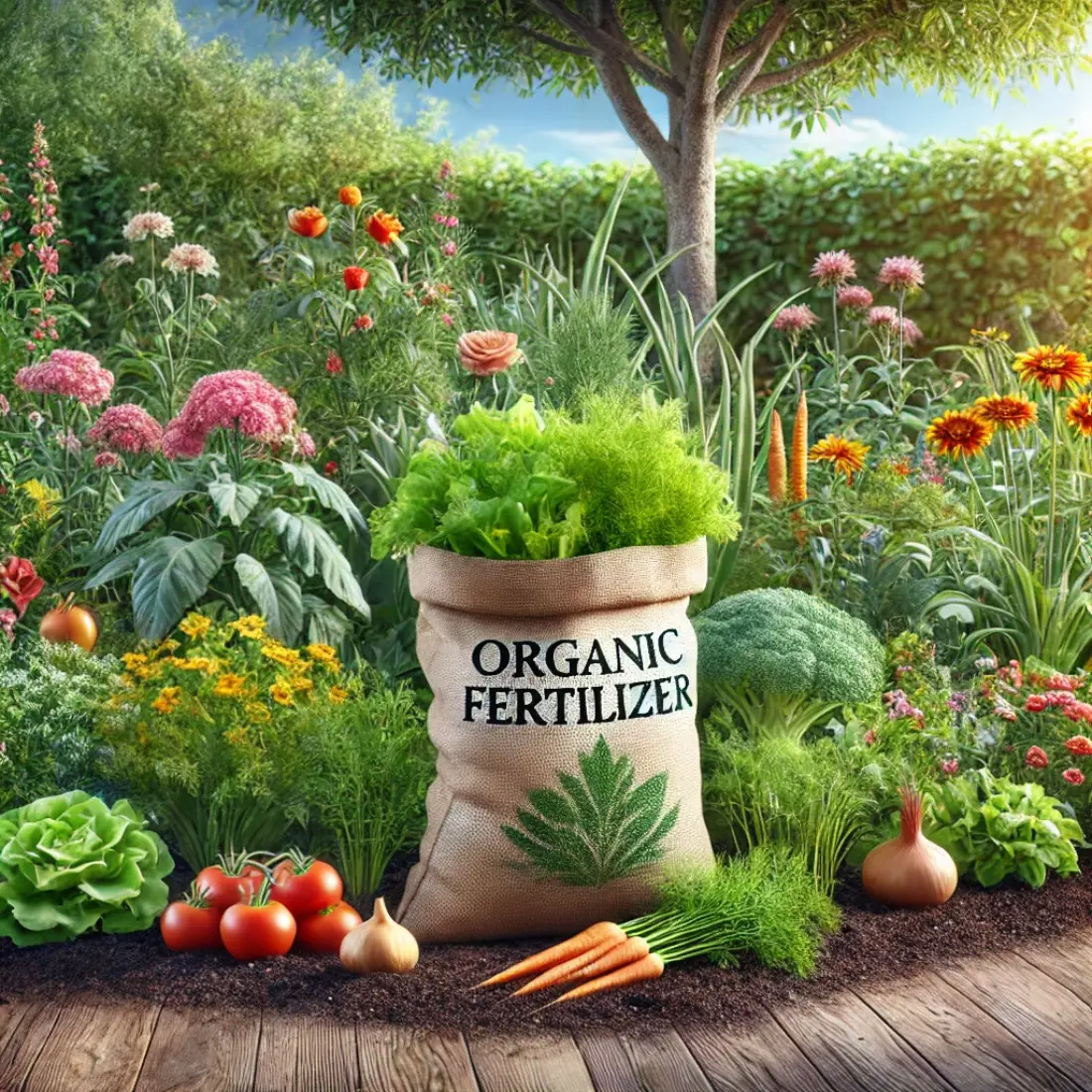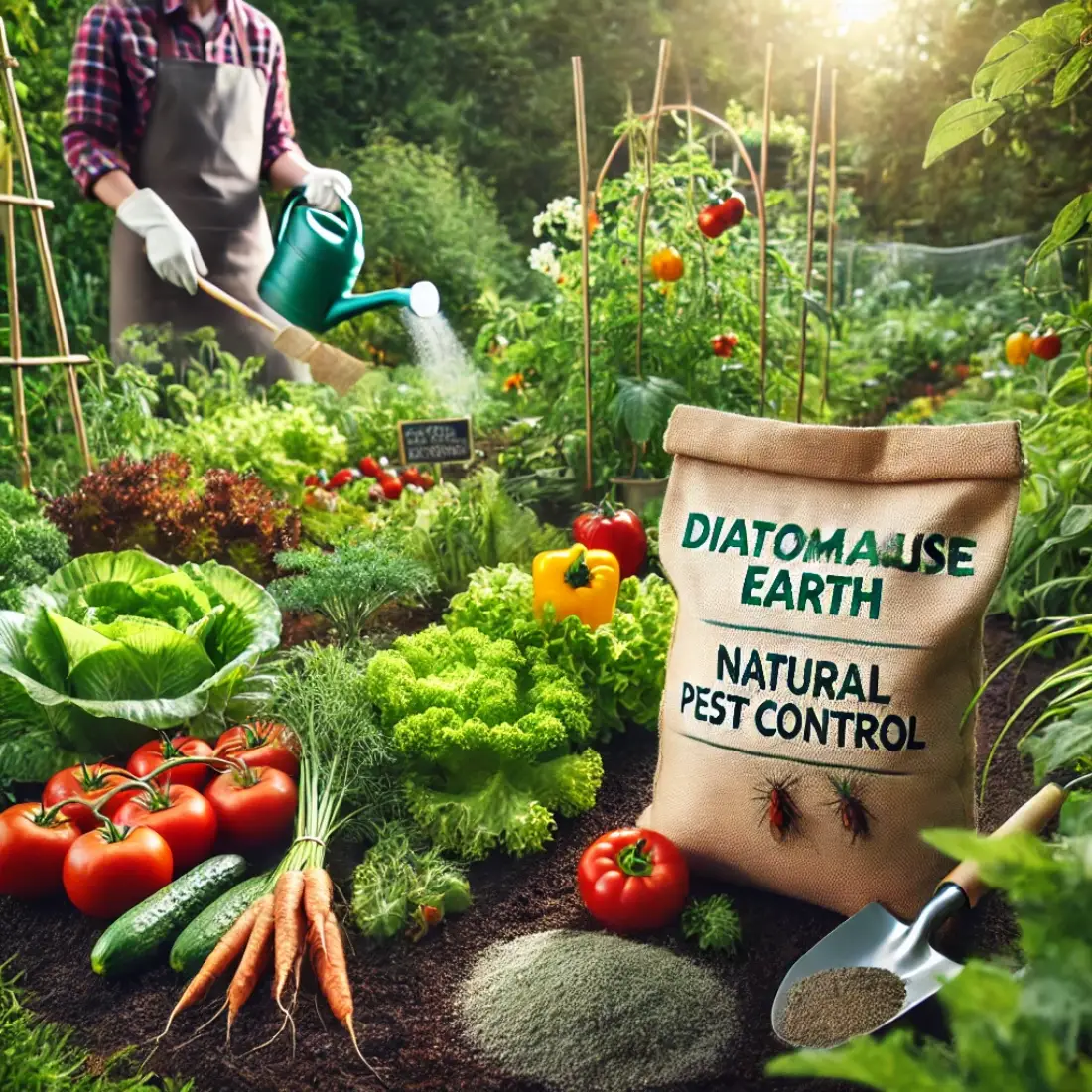Balanced organic fertilizer is a vital component in sustainable gardening and farming. Unlike chemical fertilizers, balanced organic fertilizers provide a harmonious mix of essential nutrients such as nitrogen, phosphorus, and potassium, all derived from natural sources.
These fertilizers not only nourish plants but also improve soil health, fostering a thriving ecosystem. Understanding what makes a fertilizer “balanced” and “organic” is crucial for gardeners and farmers aiming for healthy, productive plants and sustainable practices.
- Balanced organic fertilizer contains essential nutrients in a natural, harmonious mix.
- It enhances soil health and promotes sustainable gardening and farming.
- Understanding its components and proper application methods ensures optimal plant growth.
Understanding Balanced Organic Fertilizer
Balanced organic fertilizer is a type of fertilizer that provides an even distribution of essential nutrients—nitrogen (N), phosphorus (P), and potassium (K)—all derived from natural sources. This balance is crucial for promoting healthy plant growth and soil fertility.
Nitrogen supports leaf and stem growth, phosphorus aids in root development and flowering, while potassium enhances overall plant health and disease resistance. A balanced organic fertilizer typically has an N-P-K ratio that reflects an equal or proportionate distribution of these nutrients, such as 10-10-10 or 5-5-5.
The organic nature of these fertilizers means they are composed of natural materials like compost, manure, bone meal, and green sand. These components break down slowly, releasing nutrients over time, which leads to a more sustainable and environmentally friendly approach to fertilizing. Unlike synthetic fertilizers, balanced organic fertilizers do not harm beneficial soil microorganisms or lead to nutrient runoff, making them ideal for long-term soil health.
Benefits of Using Balanced Organic Fertilizer
Balanced organic fertilizer offers numerous benefits that extend beyond just nourishing plants. Here are some key advantages:
- Enhances Soil Health: Balanced organic fertilizers improve soil structure by increasing its organic matter content. This helps soil retain moisture, reduces erosion, and enhances the activity of beneficial microorganisms. These microorganisms break down organic matter, releasing nutrients in a form that plants can easily absorb.
- Provides Essential Nutrients: Balanced organic fertilizers supply plants with the necessary nutrients—nitrogen, phosphorus, and potassium—in a balanced ratio. This ensures that plants receive a steady and consistent supply of nutrients, promoting healthy growth, vibrant foliage, strong roots, and increased flower and fruit production.
- Improves Plant Growth and Yield: Plants fed with balanced organic fertilizers typically exhibit stronger growth and higher yields. The slow-release nature of organic fertilizers ensures a continuous supply of nutrients, preventing the nutrient burn and imbalances often associated with synthetic fertilizers.
- Environmentally Friendly: Organic fertilizers are derived from natural sources and do not contain harmful chemicals. This makes them environmentally friendly, reducing the risk of water contamination from nutrient runoff. Moreover, using organic fertilizers helps in recycling waste materials like compost and manure, contributing to a more sustainable agricultural system.
- Enhances Disease and Pest Resistance: The improved soil health and balanced nutrient supply from organic fertilizers lead to stronger plants that are better able to resist diseases and pests. Healthy plants have more robust immune systems, reducing the need for chemical pesticides and herbicides.
- Supports Biodiversity: Using organic fertilizers supports a diverse soil ecosystem. Beneficial insects, earthworms, and microorganisms thrive in organically fertilized soils, creating a balanced and healthy environment that benefits plant growth.
Components of Balanced Organic Fertilizer
Balanced organic fertilizers consist of natural ingredients that provide essential nutrients in a harmonious blend. The main components include:
Nitrogen Sources Nitrogen is crucial for plant growth, especially for leafy development. Common organic sources of nitrogen include:
- Compost: Decomposed organic matter rich in nitrogen.
- Manure: Animal waste, particularly from chickens, cows, and horses, which is high in nitrogen.
- Alfalfa Meal: A plant-based source of nitrogen that also adds organic matter to the soil.
Phosphorus Sources Phosphorus supports root development, flowering, and fruiting. Organic phosphorus sources include:
- Bone Meal: Made from ground animal bones, bone meal is an excellent source of phosphorus.
- Rock Phosphate: A mined mineral that slowly releases phosphorus over time.
- Fish Emulsion: A liquid fertilizer derived from fish, rich in phosphorus and other nutrients.
Potassium Sources Potassium enhances overall plant health, disease resistance, and drought tolerance. Organic potassium sources include:
- Wood Ash: Derived from burned hardwood, wood ash provides a significant amount of potassium.
- Greensand: A mineral deposit containing glauconite, which slowly releases potassium and other trace minerals.
- Kelp Meal: Made from dried seaweed, kelp meal is a great source of potassium and also contains trace elements.
Additional Micronutrients Balanced organic fertilizers often include a range of micronutrients essential for plant health, such as calcium, magnesium, sulfur, and iron. These are provided by:
- Dolomite Lime: Supplies calcium and magnesium.
- Epsom Salts: Provide magnesium and sulfur.
- Blood Meal: Rich in nitrogen and also supplies iron.
Organic Matter Organic matter is a critical component of balanced organic fertilizers, improving soil structure and water retention. Key sources include:
- Compost: Adds organic matter, improves soil texture, and provides a wide range of nutrients.
- Humus: Fully decomposed organic matter that enhances soil fertility and structure.
How to Choose a Balanced Organic Fertilizer
Choosing the right balanced organic fertilizer for your garden or farm involves several important considerations:
Understanding Fertilizer Labels: Organic fertilizers are labeled with an N-P-K ratio, indicating the percentage of nitrogen (N), phosphorus (P), and potassium (K). A balanced fertilizer has equal or proportionate amounts of these nutrients, such as 10-10-10 or 5-5-5. Understanding these numbers helps you match the fertilizer to your plant’s needs.
Soil Testing: Before selecting a fertilizer, conduct a soil test to determine the existing nutrient levels in your soil. Soil testing kits are available, or you can send a sample to a local extension service. Knowing your soil’s deficiencies ensures you choose a fertilizer that supplements the missing nutrients effectively.
Plant Requirements: Different plants have varying nutrient needs. Leafy greens, for instance, require more nitrogen, while root vegetables need more phosphorus. Choose a balanced organic fertilizer that aligns with the specific needs of your plants.
Source of Ingredients: Check the source of the fertilizer ingredients. Opt for fertilizers made from high-quality, natural ingredients like compost, bone meal, and kelp meal. Avoid those with fillers or synthetic additives.
Application Method: Consider how the fertilizer is applied. Some organic fertilizers are granular and worked into the soil, while others are liquid and applied through watering. Choose a method that fits your gardening routine and the needs of your plants.
Application of Balanced Organic Fertilizer
Applying balanced organic fertilizer correctly is crucial to ensure your plants receive the maximum benefit. Here are some best practices for different application methods:
Broadcasting This method involves spreading the fertilizer evenly over the soil surface. It is suitable for large garden beds and lawns.
- How to do it: Use a spreader or your hands to evenly distribute the granular fertilizer over the area.
- When to apply: Best done before planting or during early growth stages. For established lawns, apply in early spring and fall.
Side-Dressing Side-dressing refers to placing fertilizer close to the plants’ root zones.
- How to do it: Create shallow furrows along the rows of plants and sprinkle the fertilizer. Cover lightly with soil.
- When to apply: Typically done mid-season to provide an extra nutrient boost during critical growth phases, such as flowering and fruiting.
Top-Dressing Top-dressing involves sprinkling fertilizer on the soil surface around existing plants.
- How to do it: Spread the fertilizer evenly around the base of the plants. Avoid direct contact with stems and leaves to prevent burning.
- When to apply: Can be done at any time during the growing season as needed.
Liquid Fertilizer Application Liquid fertilizers are diluted in water and applied directly to the soil or foliage.
- How to do it: Mix the liquid fertilizer according to the package instructions and apply using a watering can or sprayer.
- When to apply: Ideal for fast-acting nutrient delivery, especially during periods of active growth or when plants show signs of nutrient deficiency.
Incorporating into Soil For new garden beds or during soil preparation, incorporating fertilizer directly into the soil ensures even nutrient distribution.
- How to do it: Mix the granular fertilizer thoroughly into the top 6-8 inches of soil using a shovel or tiller.
- When to apply: Best done before planting or transplanting.
Seasonal Application Guidelines
- Spring: Apply before planting to give seedlings a strong start.
- Summer: Side-dress or top-dress to support mid-season growth.
- Fall: Apply to perennials and lawns to strengthen root systems for winter.
Homemade Balanced Organic Fertilizer Recipes
Creating your own balanced organic fertilizer at home is cost-effective and environmentally friendly. Here are a few simple recipes:
Compost-Based Fertilizer
Ingredients:
- 2 parts compost
- 1 part aged manure (cow, chicken, or horse)
- 1 part bone meal (phosphorus source)
- 1 part wood ash or greensand (potassium source)
Instructions: Combine all ingredients in a large container or wheelbarrow. Mix thoroughly to ensure even distribution of nutrients. Apply a 1-2 inch layer around plants and gently work it into the topsoil.
Fish Emulsion and Seaweed Fertilizer
Ingredients:
- 1 gallon of water
- 1 cup fish emulsion (nitrogen and phosphorus source)
- 1 cup seaweed extract or kelp meal (potassium and trace minerals source)
Instructions: Mix the fish emulsion and seaweed extract into the water. Stir well to create a uniform liquid fertilizer. Apply the solution to the soil around plants every 2-4 weeks.
Alfalfa Meal Fertilizer
Ingredients:
- 5 pounds of alfalfa meal (rich in nitrogen and organic matter)
- 1 pound of rock phosphate (phosphorus source)
- 1 pound of greensand (potassium source)
Instructions: Combine alfalfa meal, rock phosphate, and greensand in a container. Mix thoroughly to ensure an even blend. Apply 2-4 cups per 100 square feet of garden space, working it into the top 3-4 inches of soil.
Banana Peel Fertilizer
Ingredients:
- 3-4 banana peels (potassium source)
- 1 tablespoon Epsom salts (magnesium source)
- 1 teaspoon baking soda (balances pH)
- 1 gallon of water
Instructions: Chop banana peels into small pieces and add to the water. Add Epsom salts and baking soda to the mixture. Let it sit for 24 hours, then strain out the banana peels. Use the liquid to water plants once a month.
Bone Meal and Blood Meal Fertilizer
Ingredients:
- 1 part bone meal (phosphorus source)
- 1 part blood meal (nitrogen source)
- 1 part wood ash (potassium source)
Instructions: Combine all ingredients in a bucket or container. Mix thoroughly. Apply around the base of plants and lightly work it into the soil. Using these homemade balanced organic fertilizers, you can nourish your plants while promoting sustainable gardening practices.
FAQs about Balanced Organic Fertilizer
What is balanced organic fertilizer?
Balanced organic fertilizer is a type of fertilizer that provides equal or proportionate amounts of essential nutrients—nitrogen, phosphorus, and potassium—from natural sources. It promotes healthy plant growth and soil health.
How often should I apply balanced organic fertilizer?
The frequency of application depends on the specific fertilizer and plant needs. Generally, apply balanced organic fertilizer 2-4 times a year: in early spring, mid-summer, and fall. Always follow the product’s instructions for the best results.
Can I use balanced organic fertilizer for all types of plants?
Yes, balanced organic fertilizer is suitable for a wide range of plants, including vegetables, fruits, flowers, and shrubs. However, always consider specific plant needs and soil conditions for optimal results.
How do I know if my plants need more balanced organic fertilizer?
Signs that plants need more fertilizer include yellowing leaves, stunted growth, poor flowering, and low yield. Conduct a soil test to determine nutrient deficiencies before adding more fertilizer.
Is balanced organic fertilizer safe for the environment?
Yes, balanced organic fertilizer is environmentally friendly. It is made from natural ingredients and does not contain harmful chemicals, reducing the risk of water contamination and promoting sustainable gardening practices.
Can I make my own balanced organic fertilizer at home?
Yes, you can make homemade balanced organic fertilizers using natural ingredients like compost, manure, bone meal, and wood ash. There are various recipes available to suit different gardening needs.
What is the N-P-K ratio in balanced organic fertilizer?
The N-P-K ratio represents the percentage of nitrogen (N), phosphorus (P), and potassium (K) in the fertilizer. Balanced organic fertilizers typically have an equal or proportionate N-P-K ratio, such as 10-10-10 or 5-5-5.
How do I apply balanced organic fertilizer to my garden?
Balanced organic fertilizer can be applied through various methods, including broadcasting, side-dressing, top-dressing, and liquid application. Choose the method that best suits your plants and garden setup.
Can balanced organic fertilizer burn my plants?
Balanced organic fertilizer is less likely to burn plants compared to synthetic fertilizers because it releases nutrients slowly. However, it’s still important to follow the recommended application rates to avoid over-fertilizing.
Are there any disadvantages to using balanced organic fertilizer?
The main disadvantage is the slower release of nutrients compared to synthetic fertilizers, which means it may take longer to see results. Additionally, balanced organic fertilizers might be more expensive and require larger quantities.











